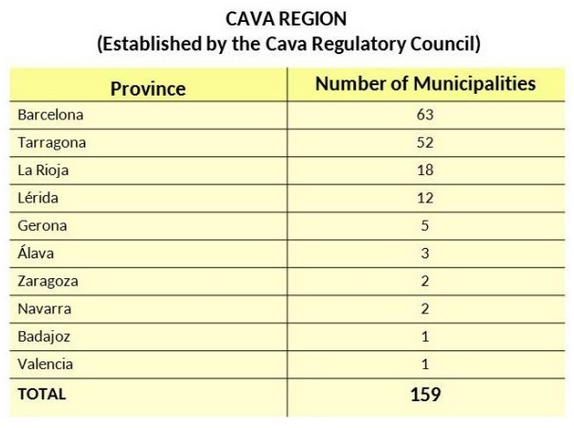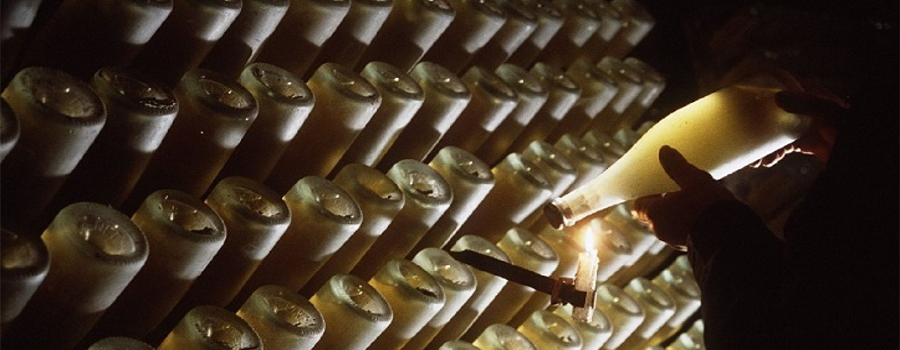During these dates we usually toast at Christmas celebrations. The idea is to toast with a frothy drink, although sometimes we don´t know how to differentiate well one from the other, because we may confuse the terms “sparkling wine”, “cava” and “champagne”.
Cava and champagne are two types of sparkling wine that are elaborated in the same way, using the “champenoise méthode”, with similar grape varieties; besides, the first is elaborated in Spain and the second in France. The cava came out in the late nineteenth century while champagne dates from to the seventeenth century. Taking into account also that the climate and soil influence the quality of the grape, it’s very difficult to compare, even using the same method.
The French drink with bubbles was known in its beginnings as “champagne”, in honor of the champenoise method, but when Spain joined the EU, our French neighbors claimed their right in exclusivity, with which Spain could not elaborate this sparkling wine and also call it champagne, since it was only valid for sparkling wines produced in the region of Champagne; so it was decided to re-baptize this Spanish Designation of Origin as Cava Designation of Origin (D.O.), doing honor to the underground cellars or cavas, where these sparkling wines were elaborated.
Another difference is that to bottle up champagne, it can be mixed grapes of different vintages, compensating the quality by this way. When it is made only with one vintage, it is called “millesime” or “vintage“. By contrast, in the cava the typical thing is to bottle wines of a single vintage.

After explaining the terms, let’s focus on the Cava D.O., the Spanish.
Usually, D.O. refer to a particular region, for example, Ribera del Duero D.O., La Mancha D.O., even in non-wine products, such as Sierra de Cazorla Oils, Rincón de Soto Pears, Cabrales Cheese. The Cava D.O. is the only denomination of Spanish origin that puts the vinification method (the traditional champagnoise or second fermentation in bottle) to its geographical origin. Of course, it is not possible to label a sparkling Spanish with the “word” cava if it is not produced in officially recognized zones or wineries.
In the case of wine, the Cava denomination is the only denomination of Spanish supraterritorial origin, together with Rioja; this means that it exceeds the autonomic borders, although more than 98% of Cava’s total production comes from Catalonia, existing also production areas in municipalities in other regions.

The Regulation of the Cava Denomination and its Regulatory Council was approved by Order of 14.11.91 (BOE 20.11.91) and modified by different Orders. Prior to these Regulations, on February 27, 1986, the Order establishing the reservation of the “Cava” Denomination was published for quality sparkling wines produced by the traditional method in the region determined therein. But there were a number of sparkling winemakers that already made the production of wine base and/or cava prior to the entry into force of the Order of 1986. That is why, within the terms of reference of the regulations there are a number of exceptions that apply to certain wineries that may use the term “Cava D.O.” even if they occur in municipalities that are not among the 159 that are mentioned in the Regulation.
The curiosity is that of the wineries that are mentioned as exceptions there are one of Zaragoza, one of Girona, one of Valencia, one of Barcelona (regions included in the Cava Region), but there is one winery in the region of Burgos, one wine cellar of Aranda de Duero that, although it is not included in the Cava region, can elaborate sparkling wines by labeling them as Cava D.O. Strange, isn´t it?
- Natural soils or tecnosoils? - 28 March 2017
- Do we toast with cava? - 15 December 2016
- Vegetal covers or mulches, right or wrong? - 21 September 2016
